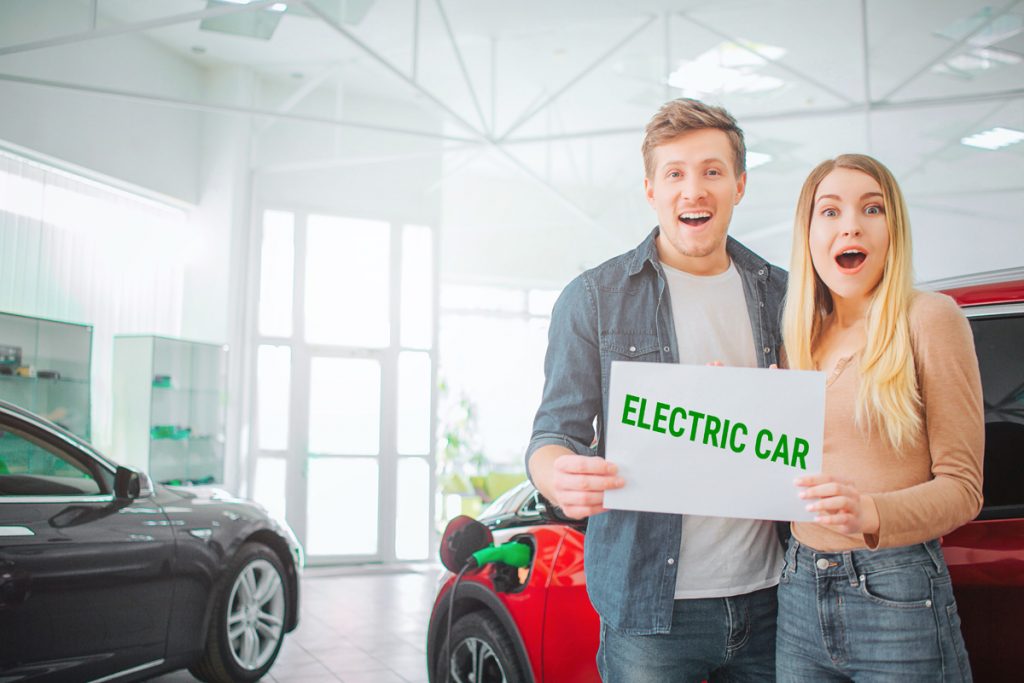Electric vehicles (EVs) are being widely touted as the future of the auto industry. And it’s impossible to overlook the fact that the driving force behind this trend is our urgent need to stem the tide of mounting global climate change.
Driving a car powered by electricity, a much more clean and quiet form of energy delivery than fossil fuels, should be a natural fit with this goal.
But like the multitude of electronic devices we already own and use, EVs store their power in batteries. And that raises questions as to how truly environment-friendly they can be.
Why batteries are a problem
The global market for EVs has seen accelerating growth in recent years. This has been accompanied by a similar increase in the industry’s market share for lithium-ion batteries. The use of batteries in EVs is forecast to drive 90% of total battery production as soon as 2025.
This is bad news for the environment because current battery production methods arguably cause greater damage than carbon emissions on their own.
For instance, over half of the world’s cobalt is sourced from the Democratic Republic of Congo. 20% of that comes from poorly regulated mining operations involving child labor, lack of safety measures, and other human rights violations. Even in the better-operated mines outside the DRC, extraction processes carry a heavy environmental toll.
It’s a heavy price to pay for the mineral that’s a core component of battery cells. And the other components all come with their own share of dirt.
For instance, lithium and nickel mining operations run the risk of creating local water shortages or polluting the environment with toxic spills. Graphite, which constitutes the anodes of a battery, is mined through detonating explosives, polluting the air with fine particulate matter.
Making every charge count

The argument in favor of EVs, however, is that their environmental costs are paid upfront. EVs definitely drive more cleanly than cars using internal combustion engines (ICEs). Over the years, the impact of EVs will taper off while ICEs continue to pollute the environment.
But those benefits only work out if the EV is being operated in a careful and efficient manner.
To some extent, that’s nothing new to car owners and operators. Fuel economy ranks high among consumer considerations when making a purchase. You pay less for transportation services like local movers when they can cover distances more efficiently. And every company wants to keep its fleet in top condition.
EV users would do well to understand that batteries break down for three reasons: temperature, time, and cycling.
Frequent exposure to high temperatures happens when cars are parked in a hot space and is something every owner should avoid. As for time, the average lifespan depends on the manufacturer, but tests on the latest generation of EVs project them to easily outlast the standard eight-year warranty.
What can really make a difference is our cycling patterns.
Fast charging on direct current leads to faster battery degradation, to the tune of 10% of original capacity after six years. And keeping the battery at or near its full capacity for a long time also reduces its maximum storage potential. Studies recommend that EVs be kept charged between 20-80% instead of cycling from 0-100%.
Considering other factors
If EV users follow optimal practices for conserving their batteries, they can maximize not only their travel range but the battery’s serviceable lifespan. And by doing so, they further distribute the initial environmental cost across time, making the EV cleaner than the ICE when all’s said and done.
But the big picture is still more complicated than that.
Electricity itself is largely generated by burning fossil fuels. In a country like Germany, where renewables contribute up to 30% of the grid, this is good news for EVs. But in other countries, where renewables make up a smaller share of the grid, each charge of your battery will increase your carbon footprint that much more.
This also ignores the possibility that an EV owner would want to change their car before the break-even point in terms of carbon footprint. If the average ICE owner does so every five years, that’s likely to happen. It would drive up production demand while shifting the burden of responsible EV care to the second-hand market.
On the bright side, though, manufacturers continue to innovate on the battery front. Batteries free from heavy metals and graphite are being developed. If these can render the lithium-ion obsolete, it will be a big boost towards the green impact of EVs.
Until then, although going the EV route isn’t an entirely clean win for the environment, it still represents a step in the right direction.











